These little brown sugar cookies are outrageously soft and chewy with an intense toffee-like flavor that comes from brown butter, brown sugar, and vanilla.
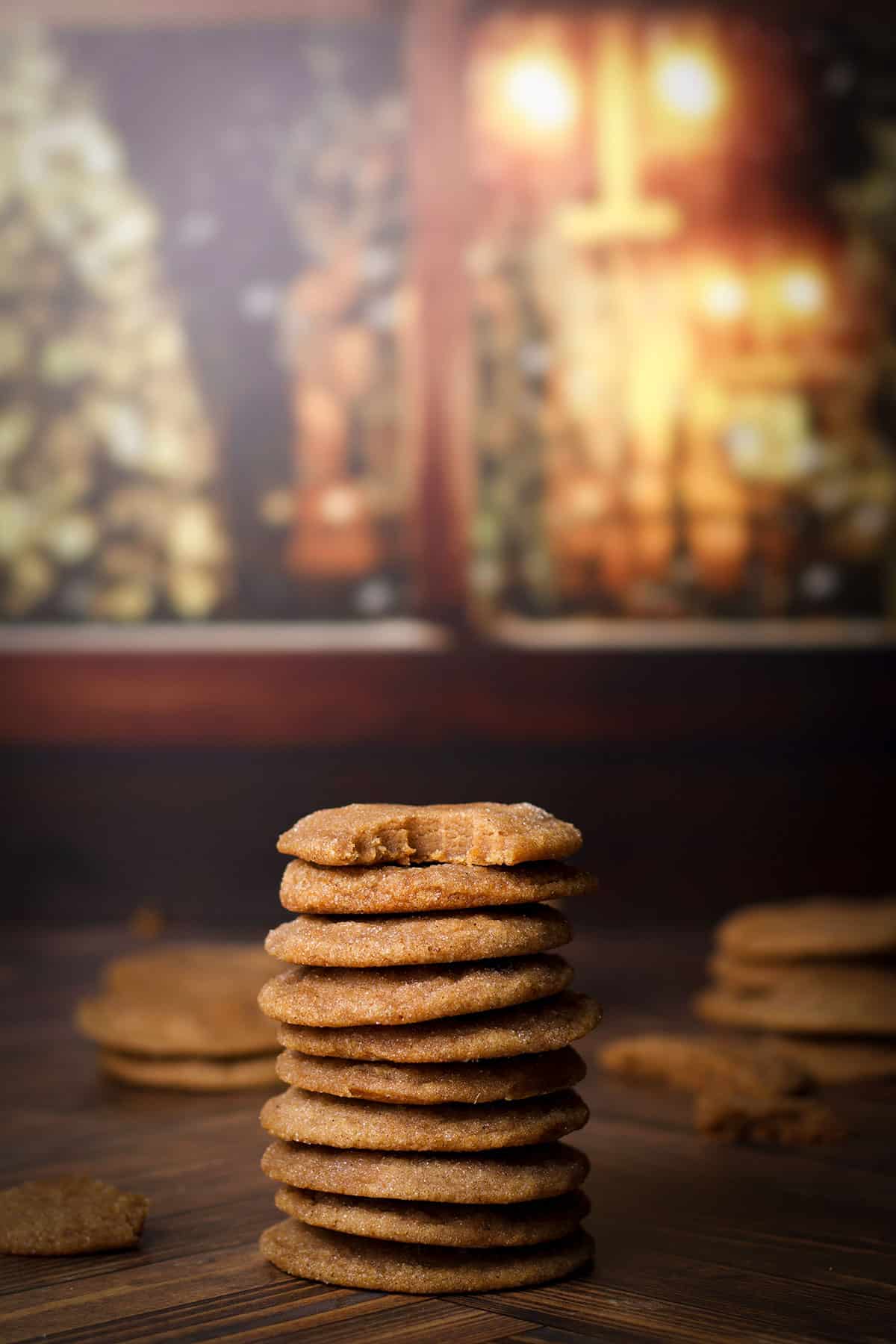
"Wow, I made these cookies this week and am in love! They were so soft and chewy, and the brown sugar gave them such a wonderful depth of flavor. Do yourself a favor and make these cookies ASAP!" - Amanda
When our kids were teenagers I kept a large covered crystal cake stand on our countertop filled with cookies and muffins at pretty much all times. Separating the kitchen from the living room was a long countertop with a raised bar and four stools. That's where I kept the cake stand so that my teenagers and their friends would grab a cookie or a muffin and pull up a stool and sit at the bar and talk to me.
If I were still living in those busy, chaotic, precious days, these are exactly the kind of cookies I would stock in that cake stand. The dough can be kept in the refrigerator for up to a week, ready to bake any time you wish. And the cookies themselves stay soft and chewy for days. Not that they're likely to last that long.
What I'm trying to say is that these are the kind of warm and cozy cookies that make you want to pull up a stool and stay a while.
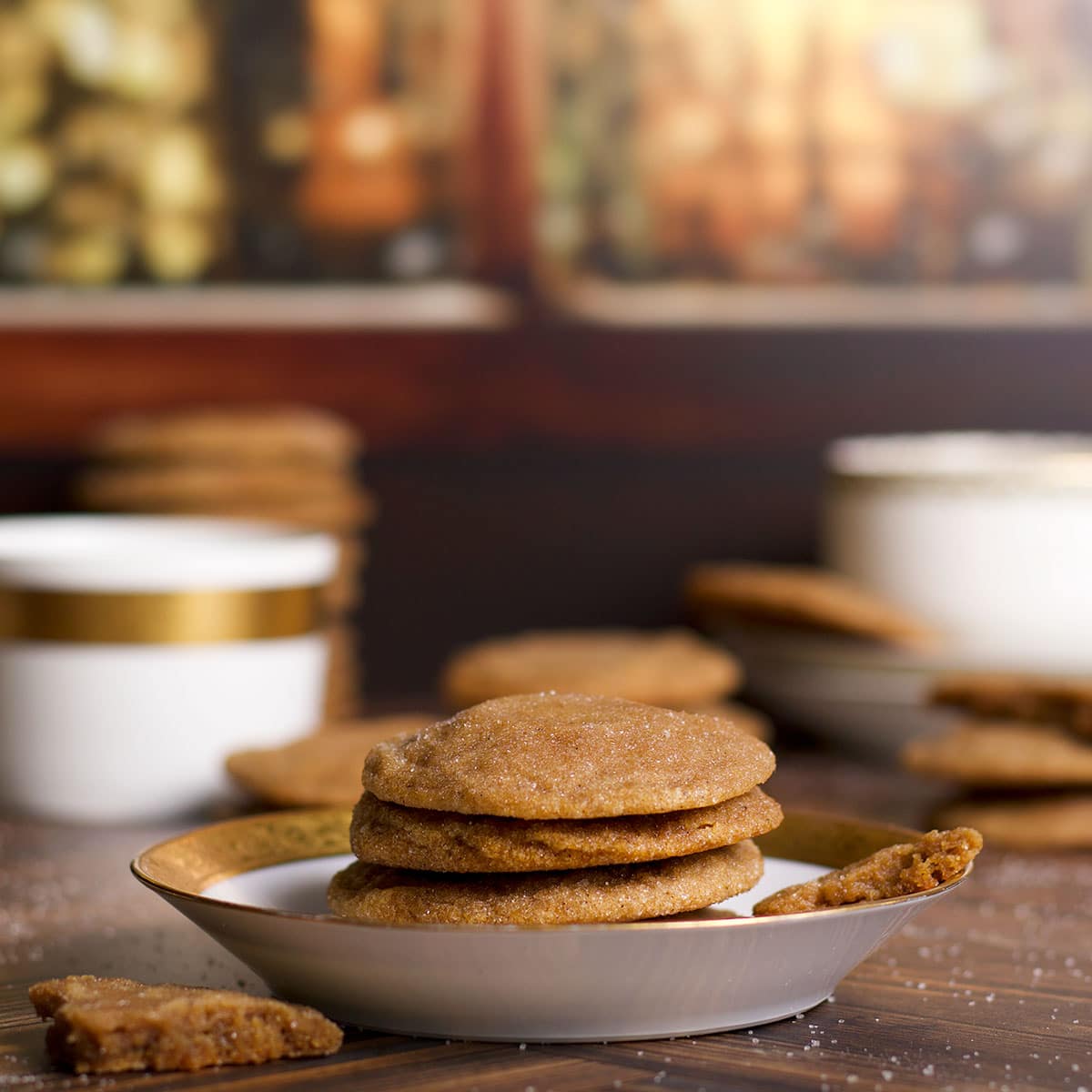
Jump to:

+ Subscribe to my newsletter for new and exclusive recipes in your in-box every month! As a full time traveler, living, working, cooking, and baking from a 5th wheel RV, it's also where I share our experiences of life on the road.
Ingredients needed to prepare this recipe
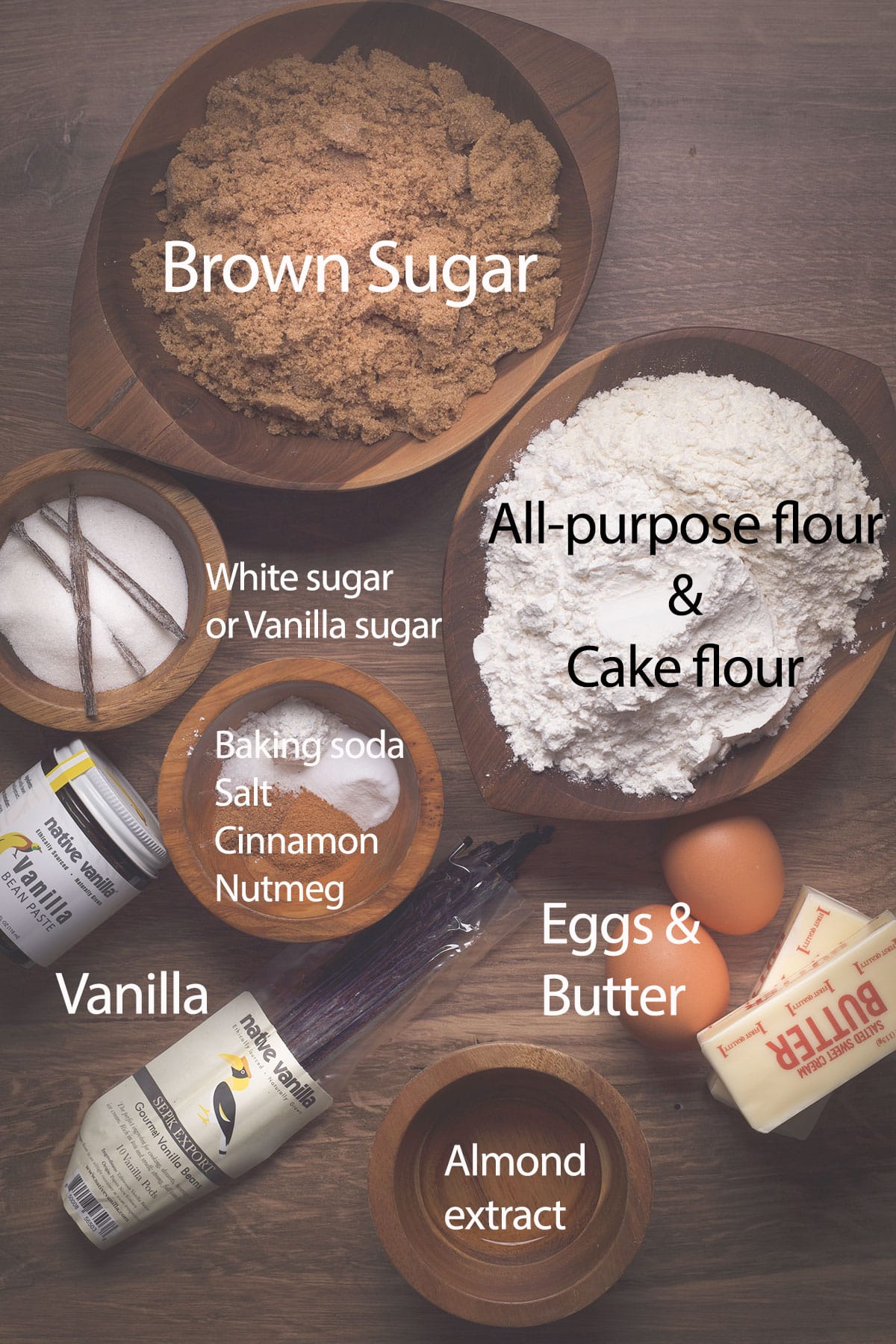
- Butter. This recipe calls for browning the butter before beating it into brown sugar which gives these cookies an irresistible warm, slightly nutty, toffee-like flavor.
- All-purpose flour and cake flour. All-purpose flour for structure, cake flour for an incredibly soft and tender texture.
- Cornstarch. Cornstarch is kind of a magical ingredient in cookies. Just a teaspoon prevents these cookies from spreading too much while giving them an incredibly light, soft, and chewy texture.
- Baking soda.
- Ground cinnamon and nutmeg intensify the warm flavors of brown sugar, brown butter, and vanilla.
- Salt.
- Brown sugar is the star of this show and the primary source of their chewy toffee flavor.
- Vanilla. There are three different vanilla options for these cookies, all delicious but all contributing a slightly different result. See the comparison below for using vanilla beans, vanilla bean paste, or vanilla extract.
- Almond extract. A bit of almond extract accentuates the nutty, warm flavor of the brown butter in these cookies.
- 2 large egg whites. It took some experimenting before settling on two egg whites and no yolks in these cookies but the egg-white-only cookies created the chewiest texture and most intense toffee and vanilla flavor.
- Granulated sugar, or vanilla sugar, for rolling.
Three vanilla options for this recipe
You have three different vanilla options for these cookies, all delicious in their own right but with slightly different results.
- Vanilla Bean Paste. Vanilla bean paste can be used interchangeably with vanilla extract but has a more intense vanilla flavor. It has a sweet, syrupy consistency that's flecked with vanilla beans so you get all that vanilla bean flavor without having to scrape the seeds from a vanilla bean.
- Vanilla beans. The main advantage to using vanilla beans in this recipe is that one bean can be used to both flavor the cookie dough and make vanilla sugar to roll the cookies in. To use a vanilla bean, use a sharp knife to cut the bean in half length-wise. Use the tip of the knife to scrape the soft center of the bean from the hard outer shell. Add the soft interior to the butter and sugar. Cut the outer shell into a few smaller pieces and add it to a container with ⅓ cup granulated sugar. Use your fingers to rub the vanilla bean into the sugar then cover until ready to bake the cookies. This will give you vanilla sugar to roll the balls of cookie dough in.
- Pure vanilla extract. This is the vanilla option most of us have in our pantry and it's a perfectly delicious way to add vanilla flavor to this brown sugar cookie dough.
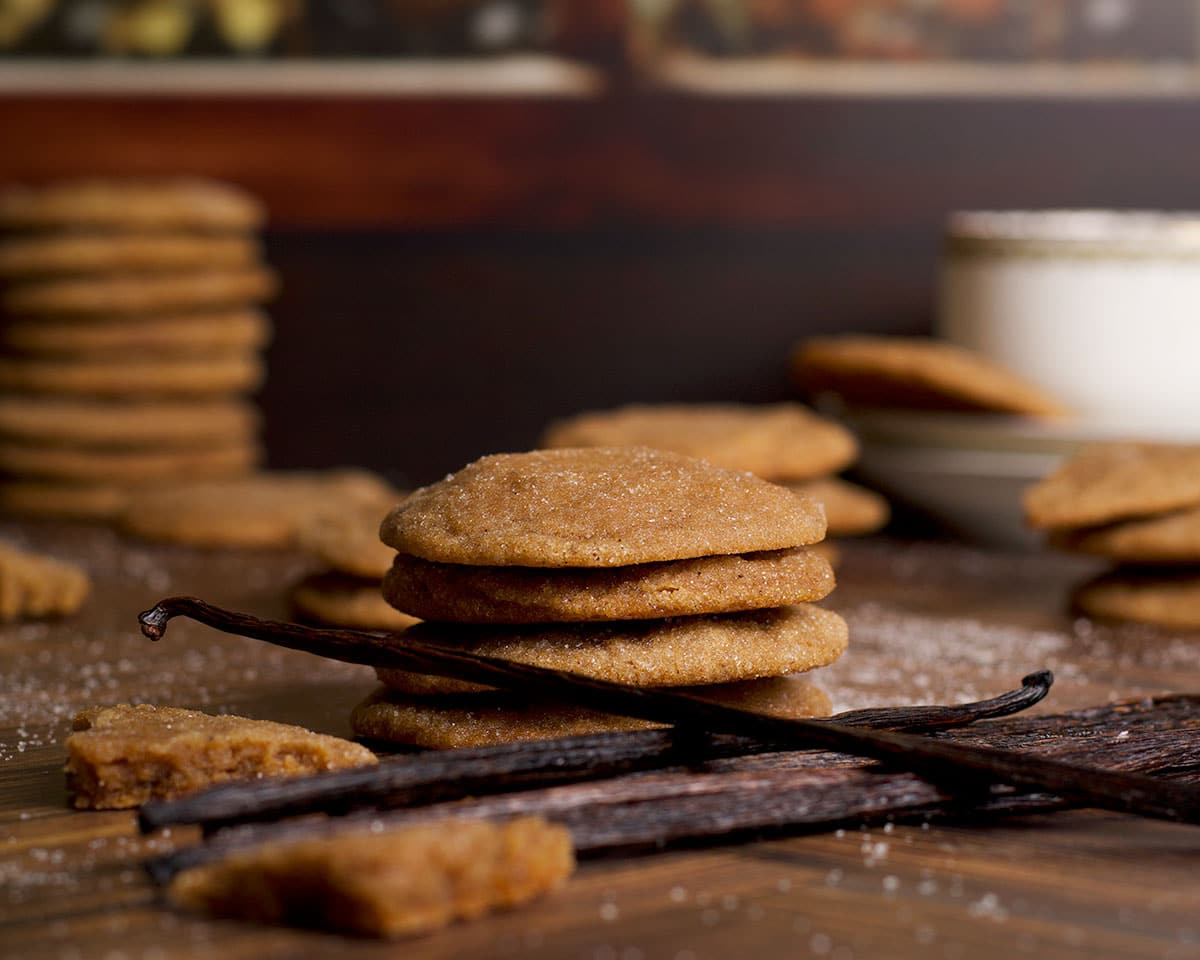
Step-by-step photos and instructions
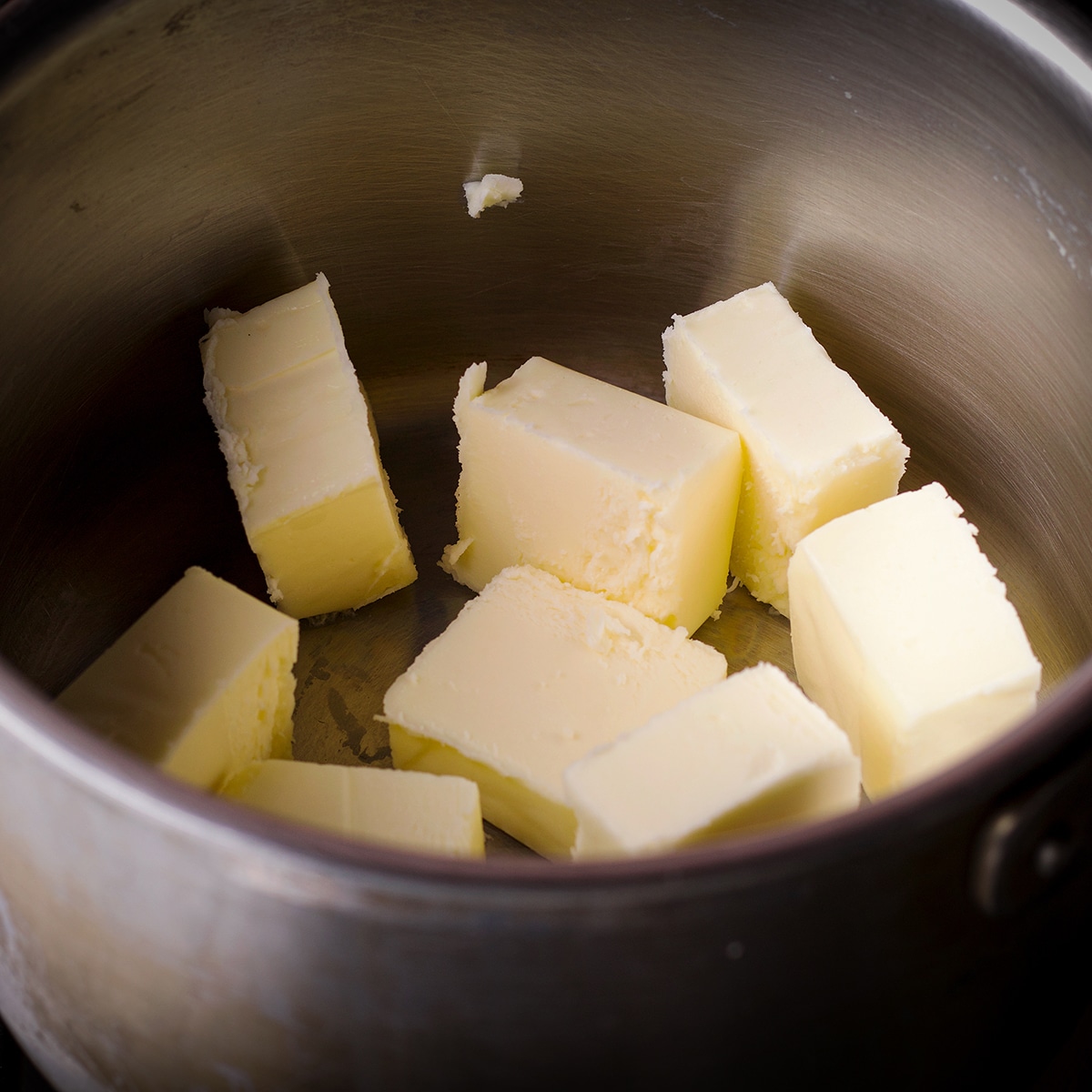
Cut the butter into chunks and put it in a light-colored saucepan. (Dark pans make it difficult to tell when the butter is browned.)
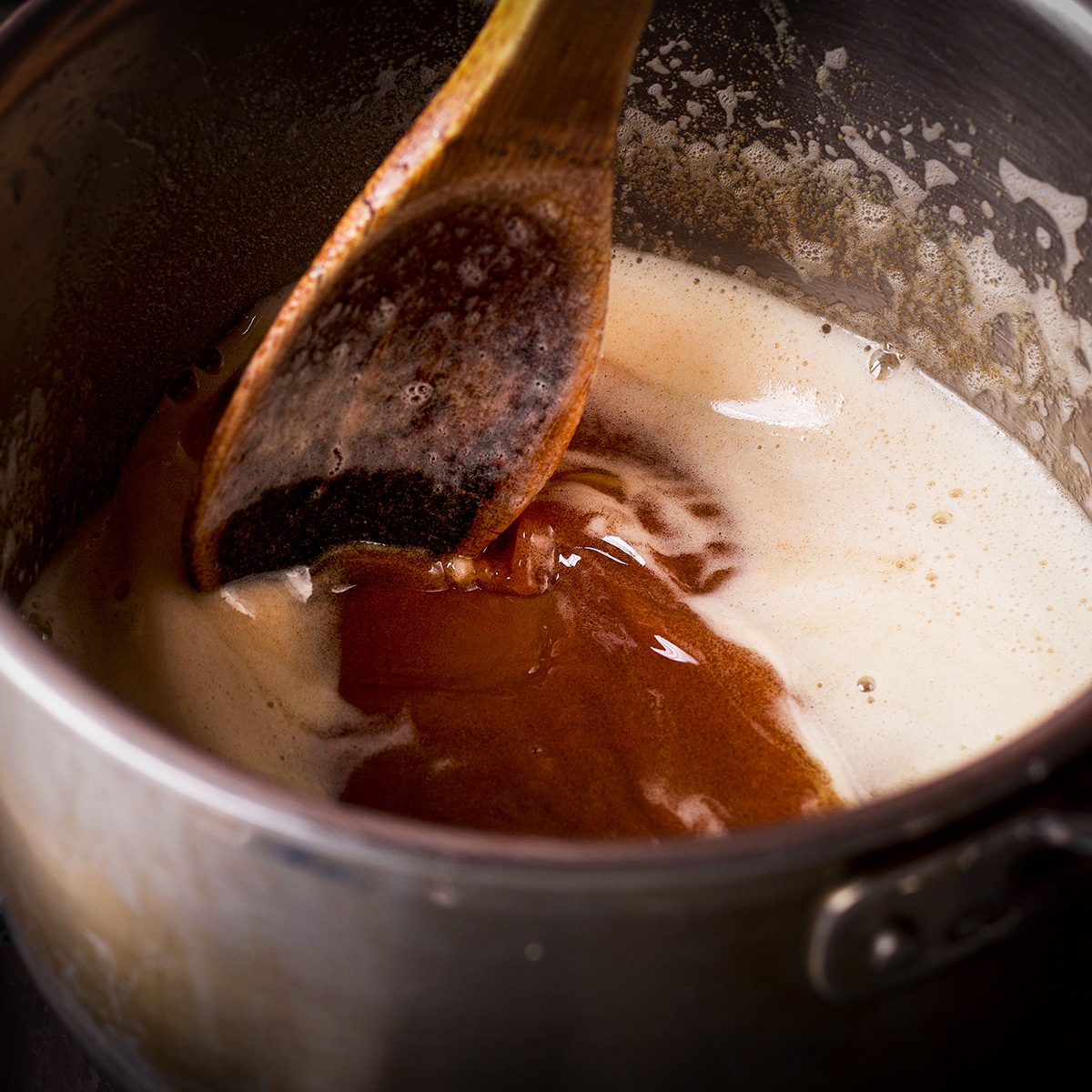
Cook over medium heat, stirring constantly, until the butter is melted and begins to boil. As you stir, pay attention to the color of the butter underneath the foam. When it's done, the butter beneath the foam will be golden brown with dark brown specks on the bottom of the pan and will smell nutty.
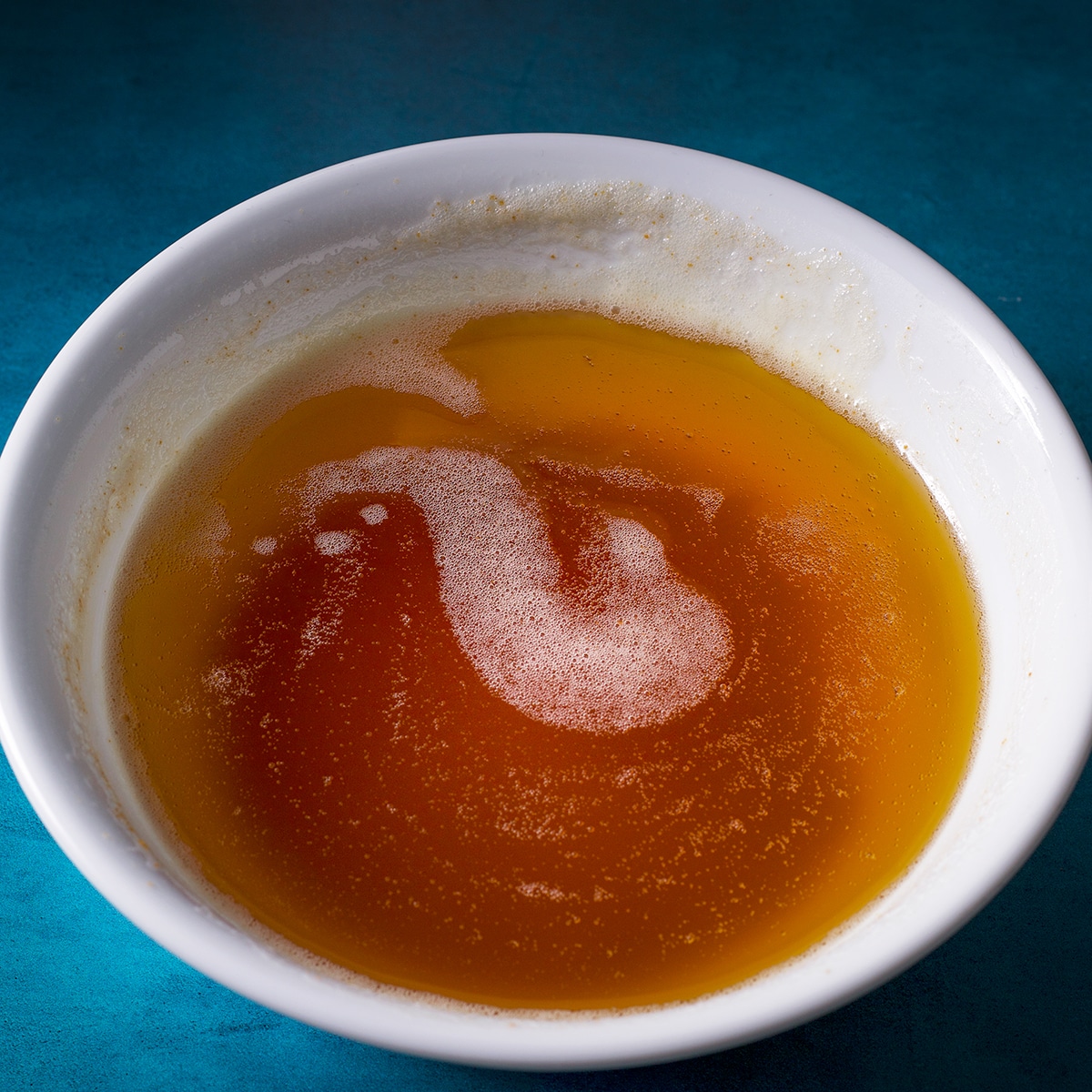
Once browned, pour the butter into a small bowl. Be sure to scrape all the brown flecks from the bottom of the pan into the bowl - those brown specks contain a lot of flavor. Let the butter cool completely until it's solid again.

Add all the dry ingredients to a small bowl and stir with a wire whisk to blend.
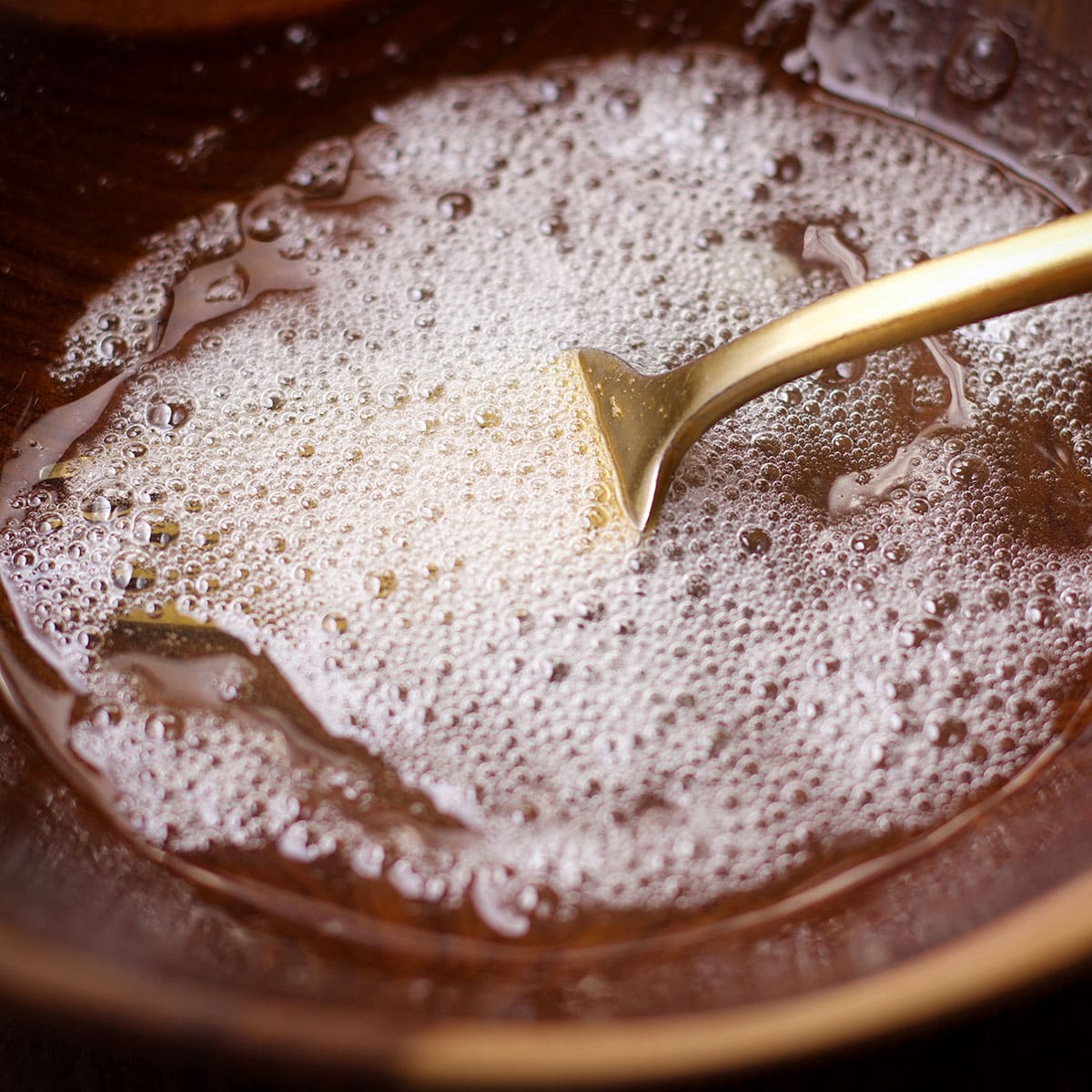
Add the egg whites to another bowl and beat them with a fork for a few seconds until they are frothey.
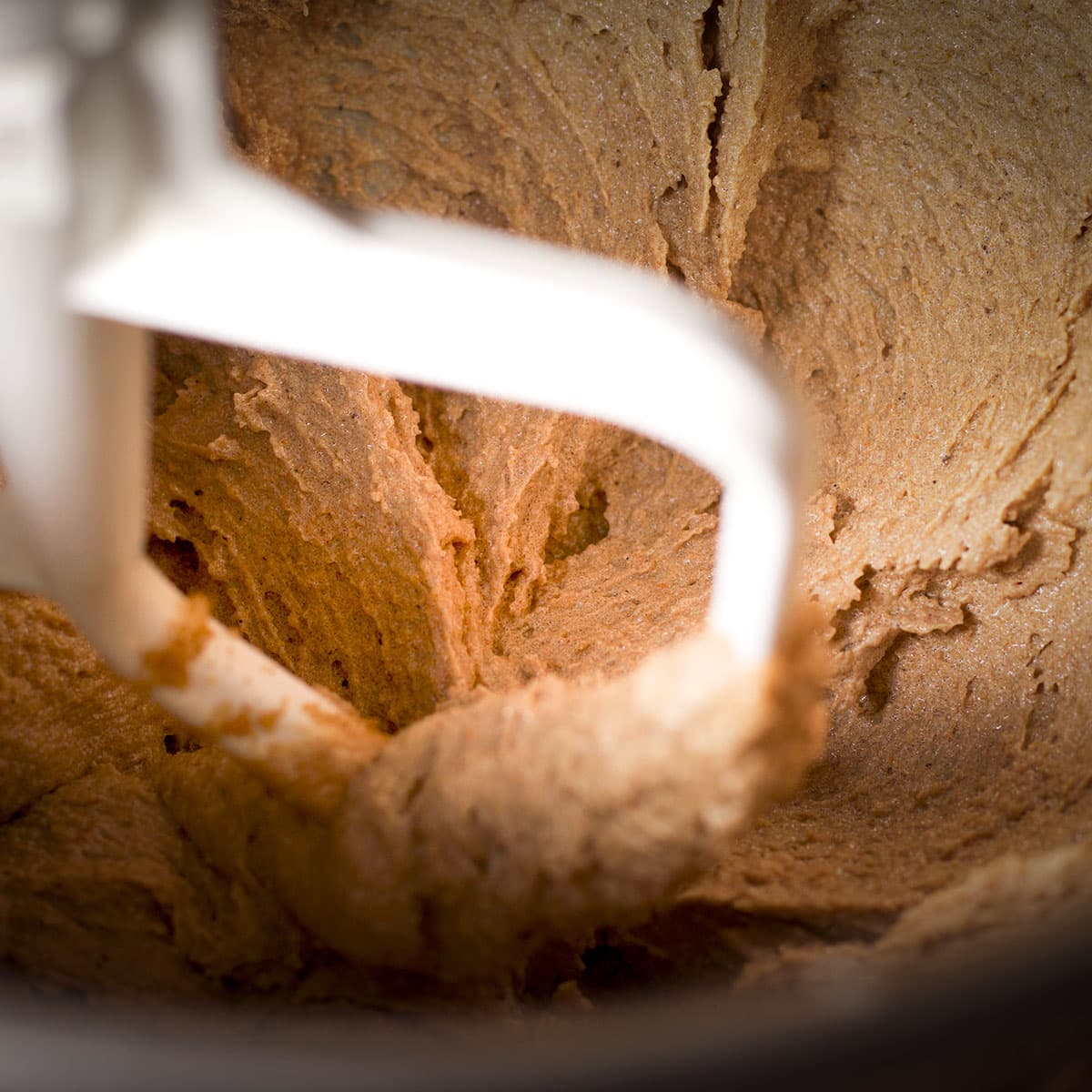
Add the brown butter (which should be solid but at room temperature), brown sugar, vanilla, and almond extract to a mixing bowl and beat with an electric mixer until the mixture appears light and fluffy.
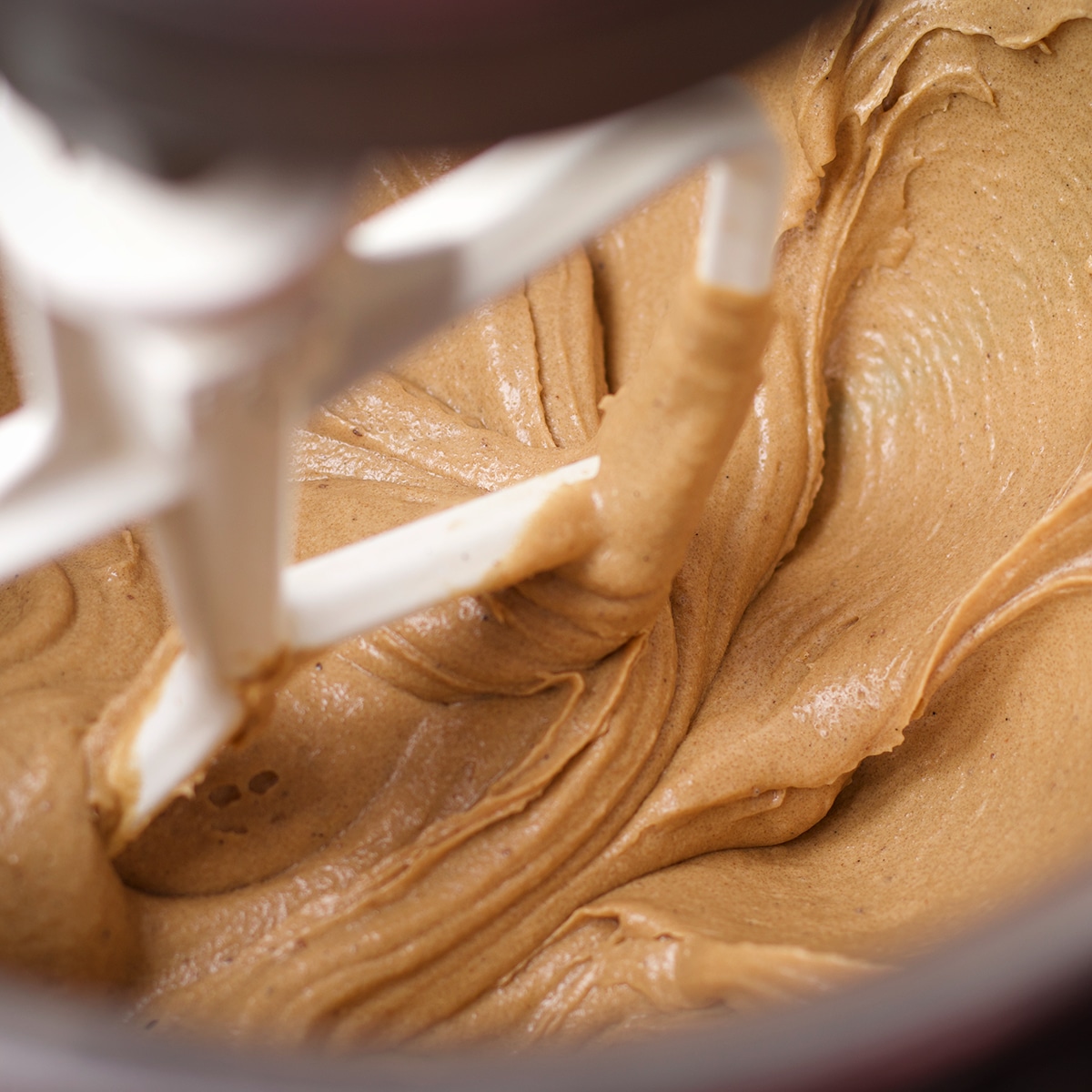
Add the egg whites and beat on medium-high speed until they are completely incorporated. Stop every once in a while to scrape down the sides of the bowl.
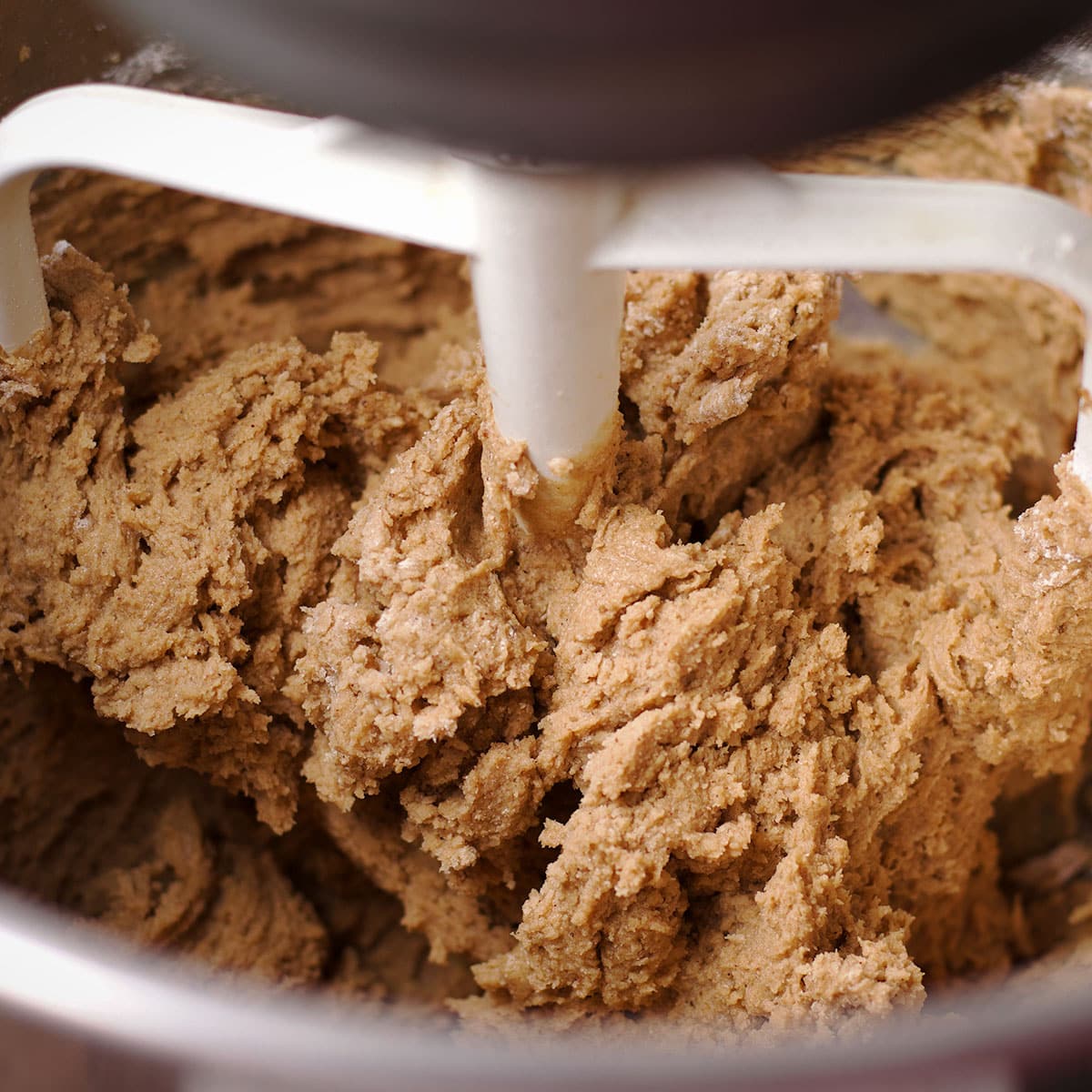
Add the dry ingredients and mix on the lowest speed just until blended. It's important to not over mix the dough at this point.
Scrape the dough into an airtight container and refrigerate it for at least 5 hours.
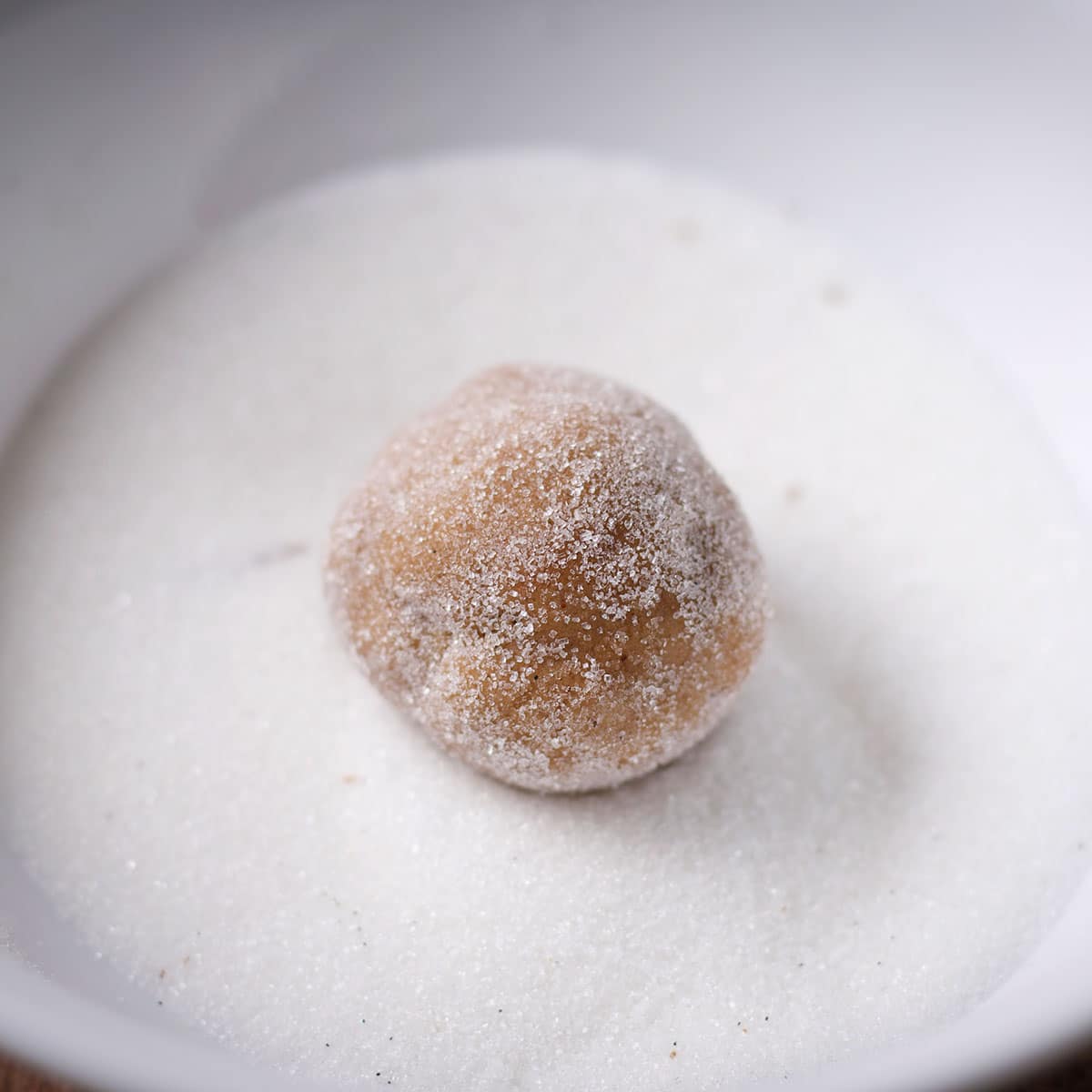
When ready to bake, preheat the oven to 350 degrees and line a baking sheet or two with parchment paper.
Form the dough into golf ball-sized balls of dough, roll the dough in sugar, then place them on the baking sheet.
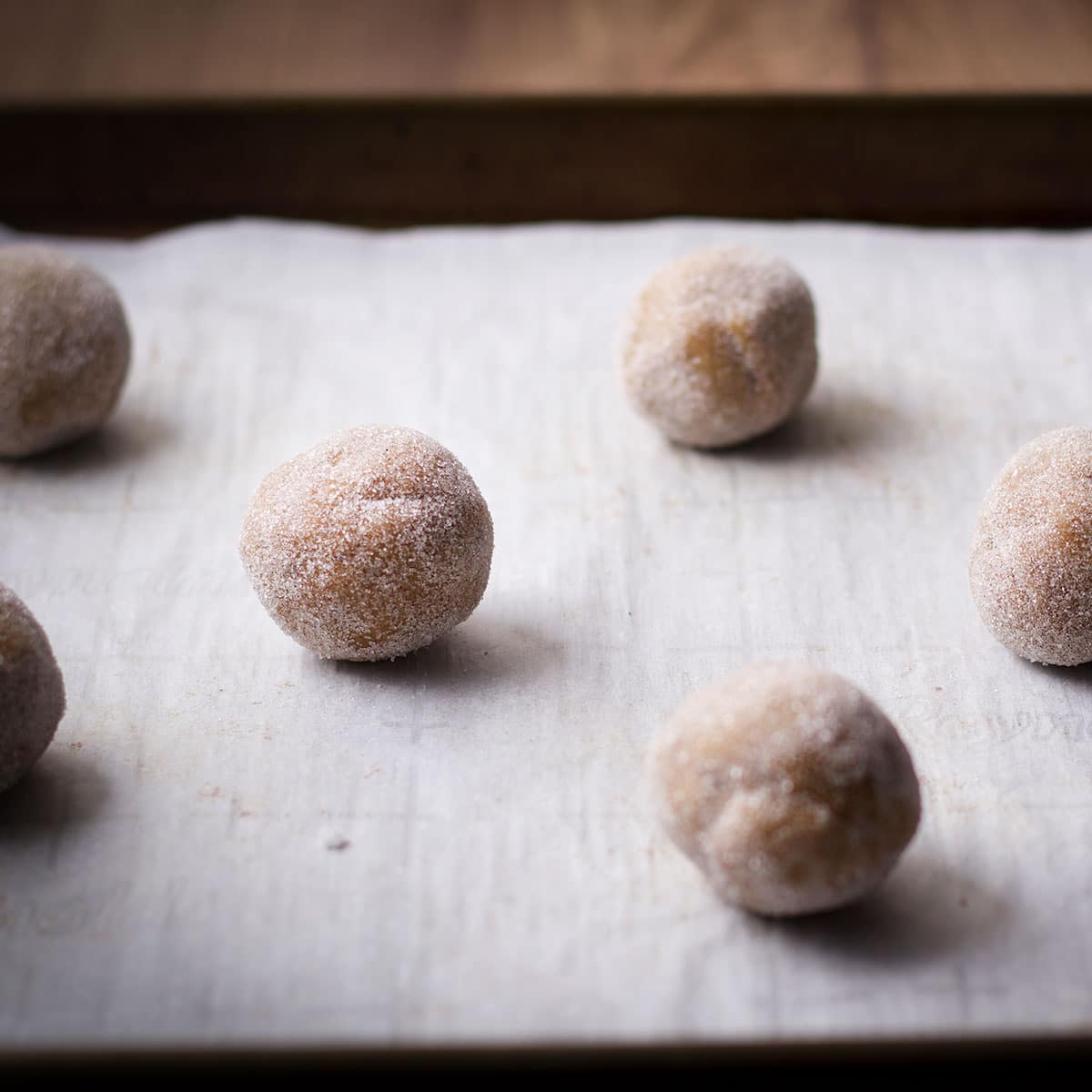
Space the cookies at least 3 inches apart and bake.
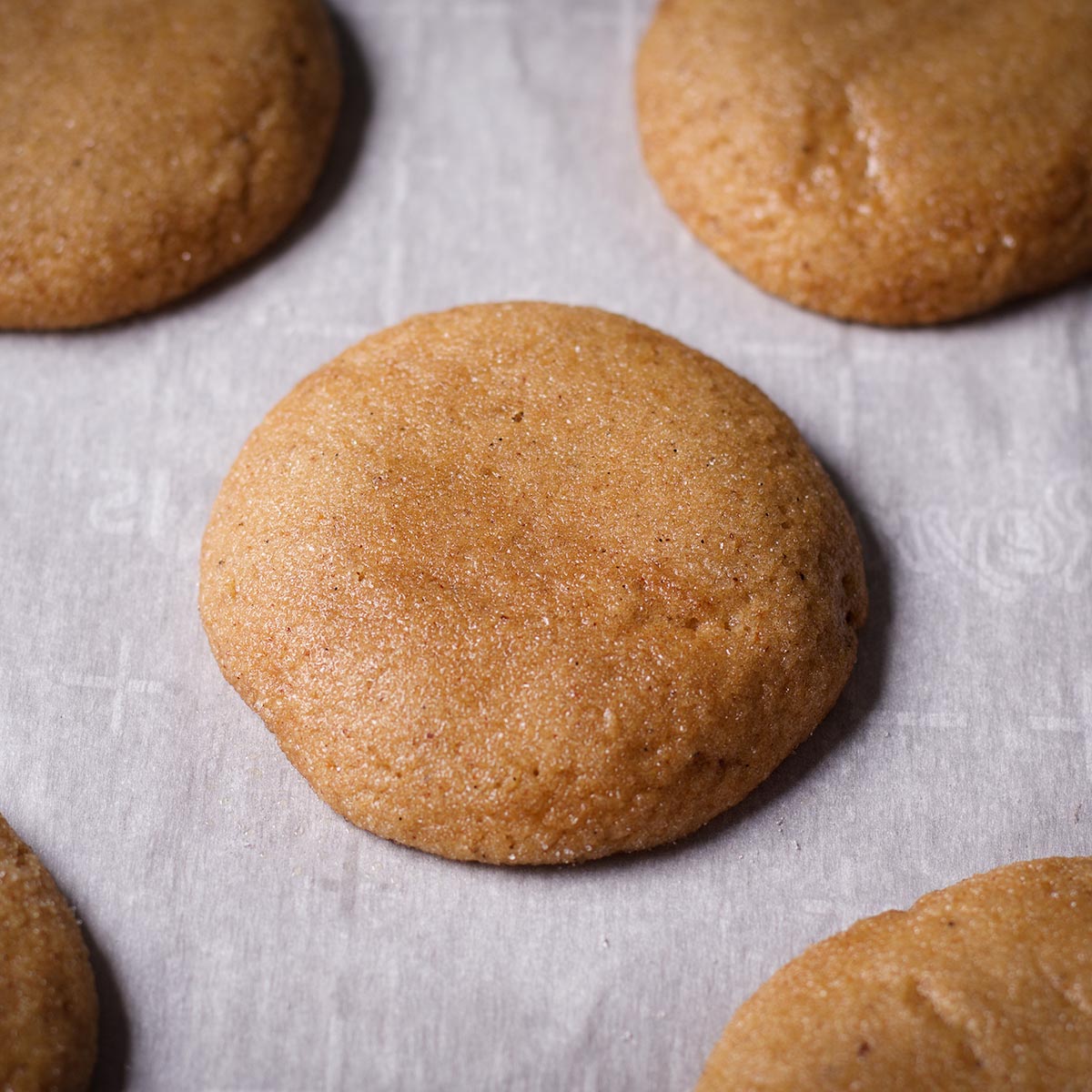
For the softest, chewiest texture, remove the cookies from the oven when they are set but still look very soft and a bit doughy in the middle, as pictured in the photo above.
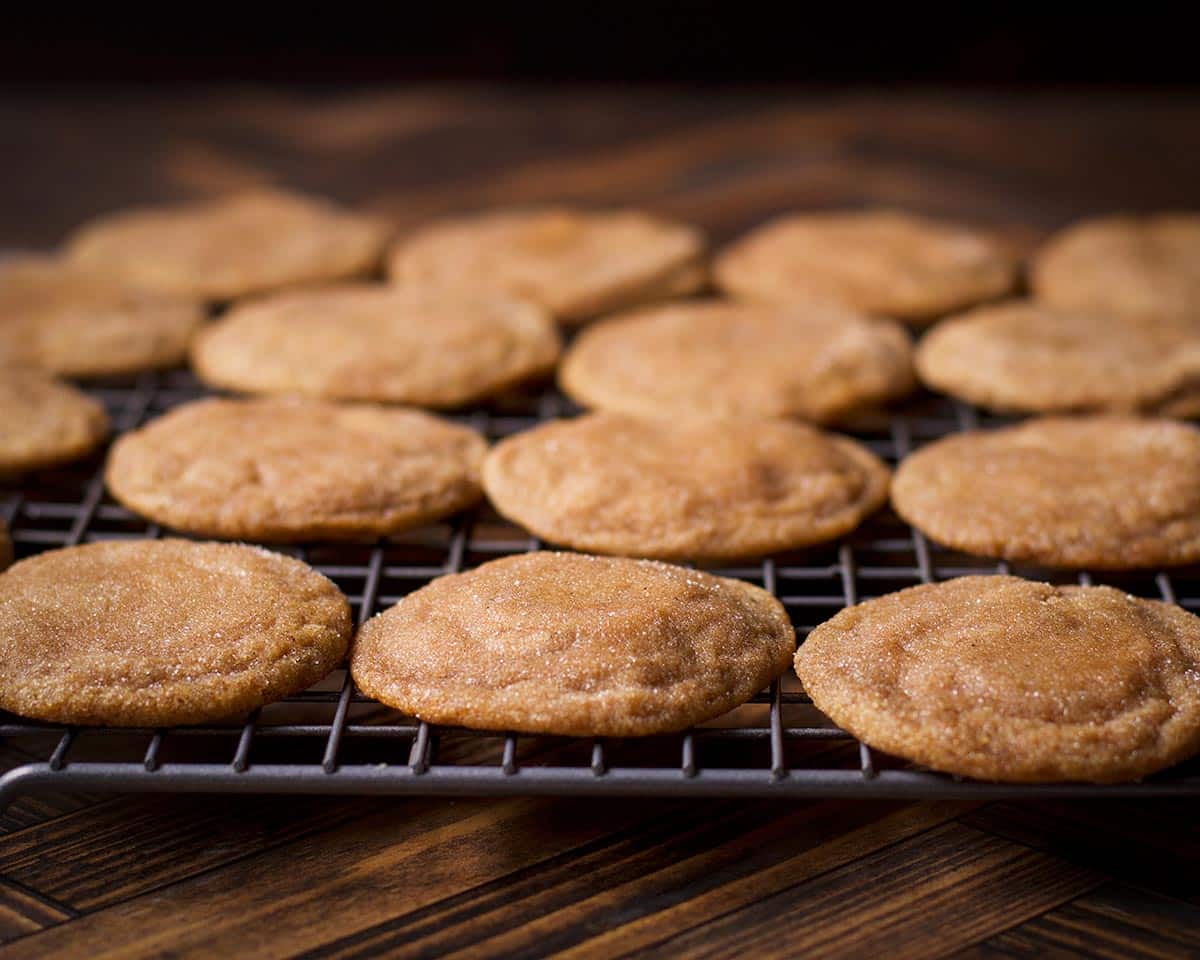
The cookies will be extremely soft when you first remove them from the oven so let them cool on the baking sheet before removing them to a wire rack. As the cookies cool, they will settle and form adorable crinkly tops. They will be firm enough to handle but still supremely soft and chewy.
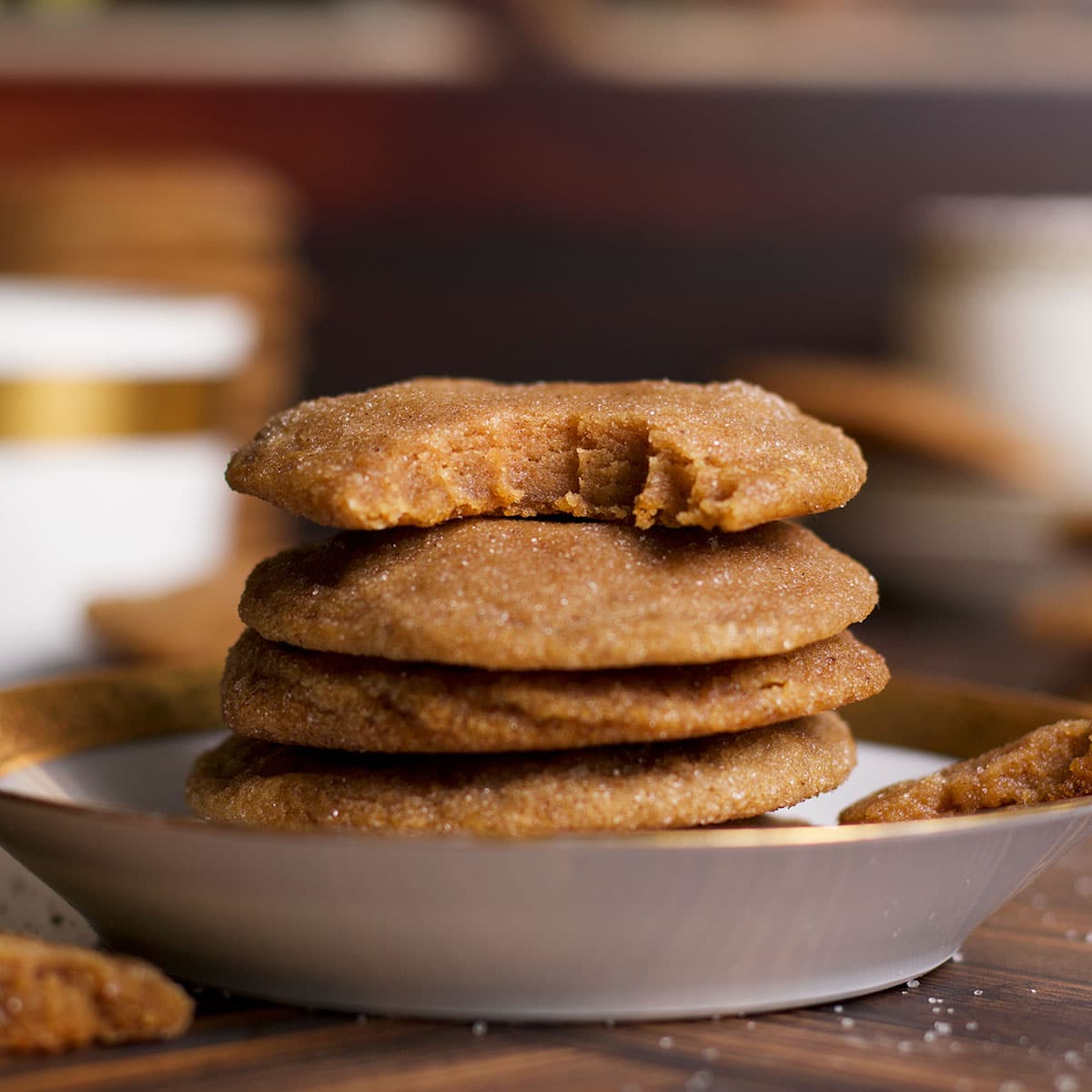
Why refrigerating the dough makes better cookies
There is something frustrating about getting to the part of the cookie recipe that says "refrigerate for at least 5 hours, and preferably 24." I get it. And yet, if you want the best-tasting cookies, that's what you'll have to do.
The minimum time to refrigerate this dough is 5 hours because that allows the butter in the dough time to get nice and cold. This ensures that the cookies hold their shape while baking. If the butter is too warm, the cookies will spread out too quickly and have a thin, crisp texture instead of a soft, chewy one.
But I highly encourage you to let the dough rest for at least 24 hours and here's why.
While the dough rests in the refrigerator the flour has time to absorb more of the liquid in the dough which helps the cookies bake and brown more evenly. The brown sugar also absorbs some of the moisture which is one of the reasons these cookies have such a chewy texture.
And in case you need another reason to let your cookie dough chill out for a day or two, letting the dough rest allows time for the starches and proteins in the flour to break down. This gives the cookies a richer more complex flavor.
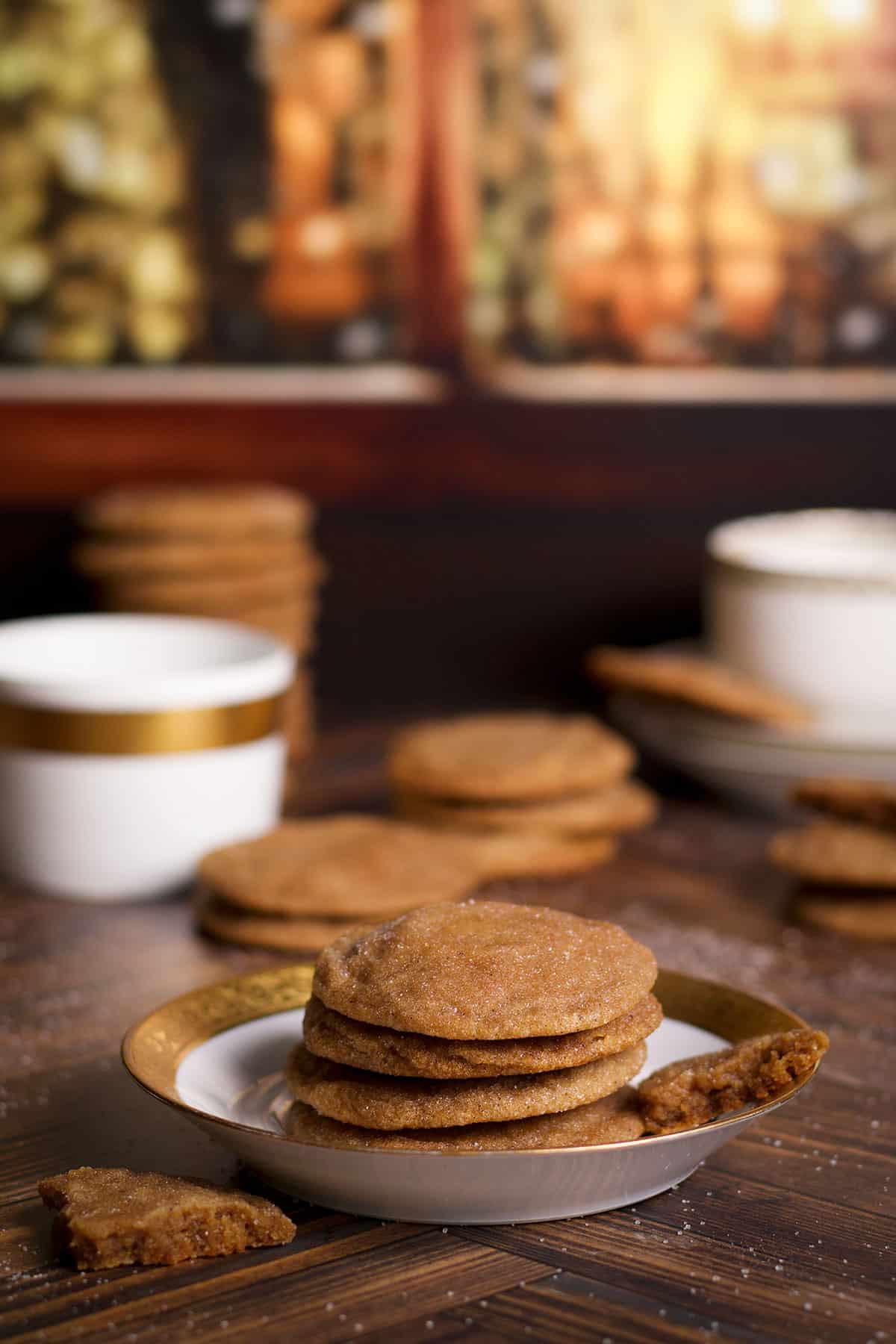
More cookie recipes

+ Subscribe to my newsletter for new and exclusive recipes in your in-box every month! As a full time traveler, living, working, cooking, and baking from a 5th wheel RV, it's also where I share our experiences of life on the road.
📖 Recipe
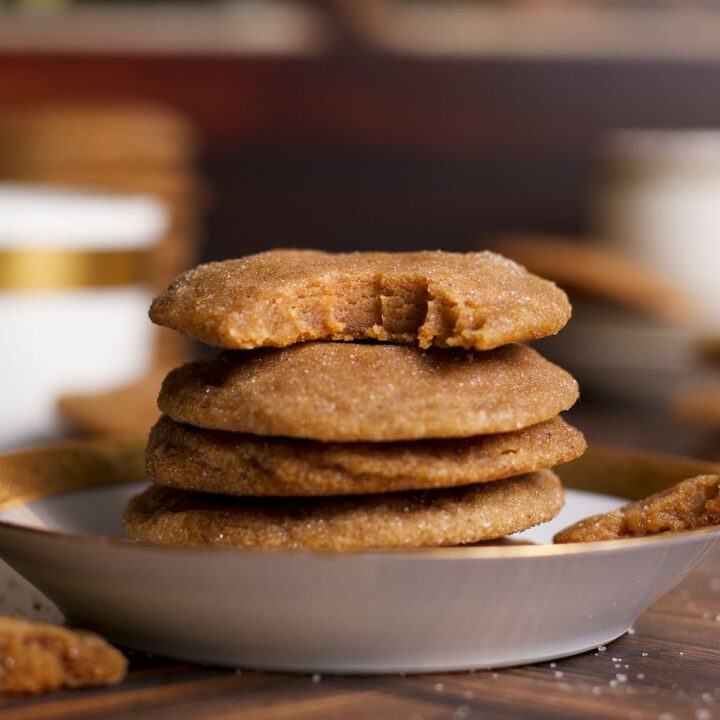
Chewy Brown Sugar Cookies
These little brown sugar cookies are outrageously soft and chewy with an intense toffee-like flavor that comes from brown butter, brown sugar, and vanilla.
Ingredients
- 13 tablespoons (184 grams) unsalted butter
- 1 cup (120 grams) all-purpose flour
- 1 cup (120 grams) cake flour
- 1 teaspoon cornstarch
- 1 teaspoon baking soda
- ¾ teaspoon ground cinnamon
- ¼ teaspoon nutmeg
- 1 teaspoon salt
- 2 large egg whites, at room temperature
- 1 ¼ cups (266 grams) packed light or dark brown sugar
- 2 teaspoons vanilla paste or pure vanilla extract, or 1 vanilla bean (see notes)
- 1 teaspoon almond extract
- ⅓ cup granulated sugar or vanilla sugar, for rolling (see notes)
Instructions
- Brown the butter: Cut the butter into chunks and put it in a light-colored saucepan. (Dark pans make it difficult to tell when the butter is browned.) Cook over medium heat, stirring constantly, until the butter is melted and begins to boil. As you stir, pay attention to the color of the butter underneath the foam. When it's done, the butter beneath the foam will be golden brown with dark brown specks on the bottom of the pan and will smell nutty. Once browned, pour the butter into a small bowl. Be sure to scrape all the brown flecks from the bottom of the pan into the bowl - those brown specks contain a lot of flavor. Let the butter cool completely until solid. You can speed the process up by placing it in the refrigerator but bring it back to room temperature before using. Brown butter can be kept in the refrigerator for up to a week.
- Add the all-purpose flour, cake flour, cornstarch, baking soda, cinnamon, nutmeg, and salt to a bowl and stir with a wire whisk to blend.
- Add the egg whites to another small bowl and whisk with a fork for a few seconds until frothy.
- Add brown butter (the butter should be solid but at room temperature), brown sugar, vanilla, and almond extract to a mixing bowl and beat with an electric mixer on medium-high speed until the mixture has lightened in color and is visibly aerated. This will take about 3 minutes but stop from time to time to scrape down the sides of the bowl.
- Add the egg whites to the butter and sugar mixture and beat on medium-high speed until completely incorporated.
- Add the dry ingredients and mix on low speed just until incorporated - it's important to not over mix the dough after adding the dry ingredients.
- Scrape the dough into an airtight container and refrigerate for at least 5 hours, preferably for 24 hours. The long rest in the refrigerator gives the dough time to develop the best flavor. The dough can be kept in the refrigerator for up to 5 days.
- When you're ready to bake the cookies, heat the oven to 350 degrees F (176 degrees C) and kine one or two baking sheets with parchment paper. Add the granulated sugar or vanilla sugar to a small bowl and place it next to the baking sheets.
- Remove the cookie dough from the refrigerator and shape it into golf ball-sized balls. If using a kitchen scale, use 28 - 30 grams of dough per cookie. Roll the balls of dough in the sugar and place them on the baking sheet, spacing them at least 3 inches apart.
- Bake the cookies one sheet at a time for 8-10 minutes. For the softest, chewiest texture, remove the cookies from the oven when they are set but still look very soft and a bit doughy in the middle. See the photo above for reference.
- Allow the cookies to cool on the baking sheet completely before removing them. They will be extremely soft right after baking but will firm up as they cool.
- Store the cookies in an air-tight container at room temperature for up to 5 days. The cookies can also be frozen for up to 3 months.
Notes
Different kinds of vanilla: For the strongest vanilla flavor in these cookies, I like to use either vanilla bean paste or a whole vanilla bean (see links below). If using a vanilla bean, use a sharp knife to cut the bean in half length-wise. Use the tip of the knife to scrape the soft center of the bean from the hard outer shell. Add the soft interior to the butter and sugar. Cut the outer shell into a few smaller pieces and add it to a container with ⅓ cup granulated sugar. Use your fingers to rub the vanilla bean into the sugar then cover until ready to bake the cookies. This will give you vanilla sugar to roll the balls of cookie dough in.
How to freeze these cookies: After forming the dough into balls and rolling them in sugar, you can place them in an airtight container and freeze the cookie dough balls for up to 3 months. The cookies can be baked in a preheated oven from frozen, no need to thaw, but they will require a couple of additional minutes to bake. You can also freeze baked cookies in an airtight container for up to 3 months. Even when frozen, these cookies are not hard and can be eaten straight from the freezer.
Recommended Products
As an Amazon Associate and member of other affiliate programs, I earn from qualifying purchases.
Nutrition Information:
Yield: 28 Serving Size: 1 cookieAmount Per Serving: Calories: 118Total Fat: 5gSaturated Fat: 3gTrans Fat: 0gUnsaturated Fat: 2gCholesterol: 14mgSodium: 128mgCarbohydrates: 16gFiber: 0gSugar: 9gProtein: 1g



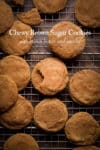
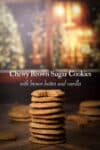
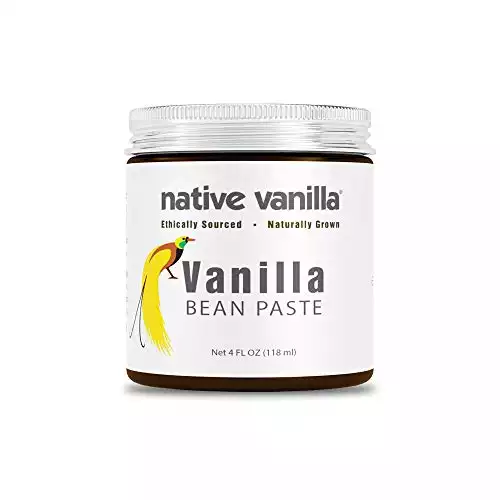
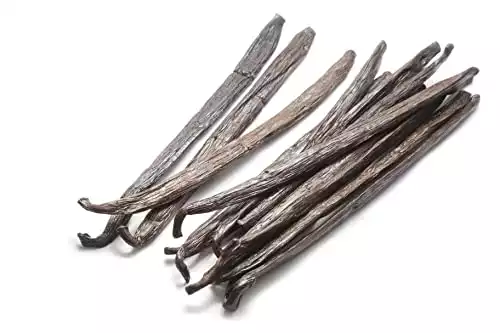

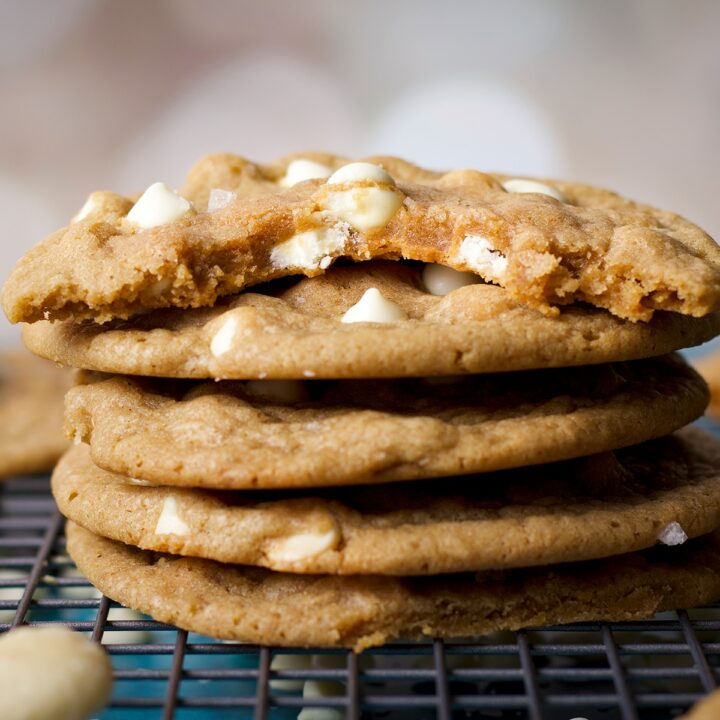
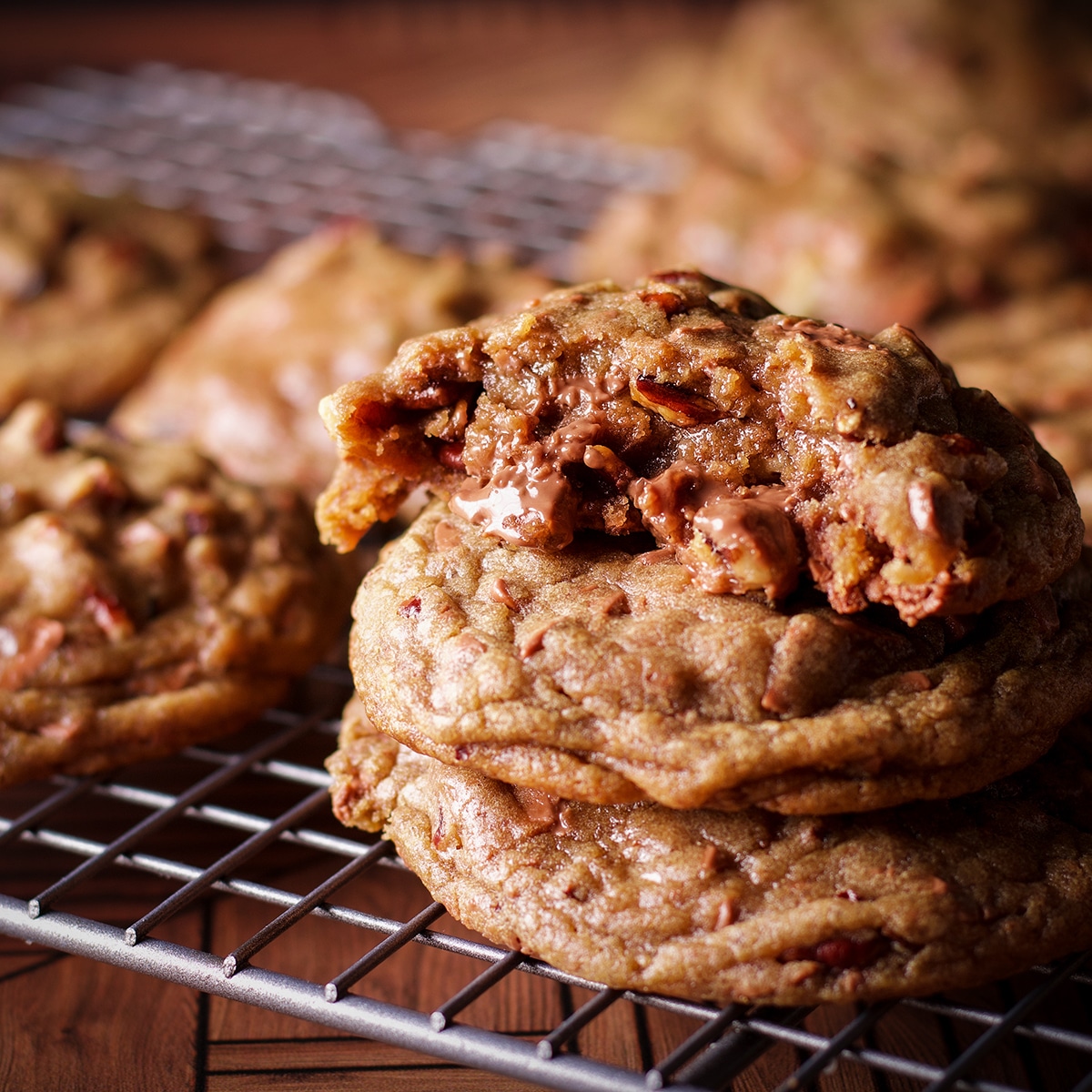
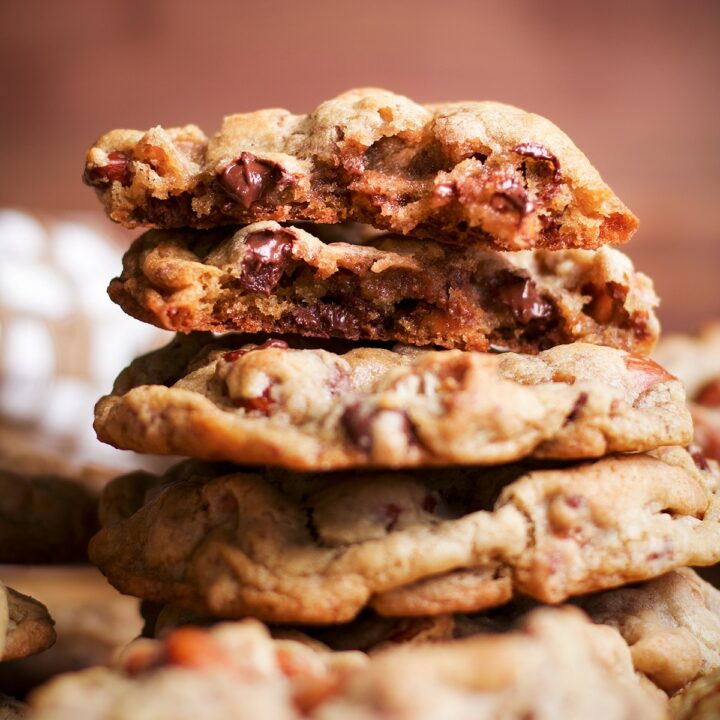
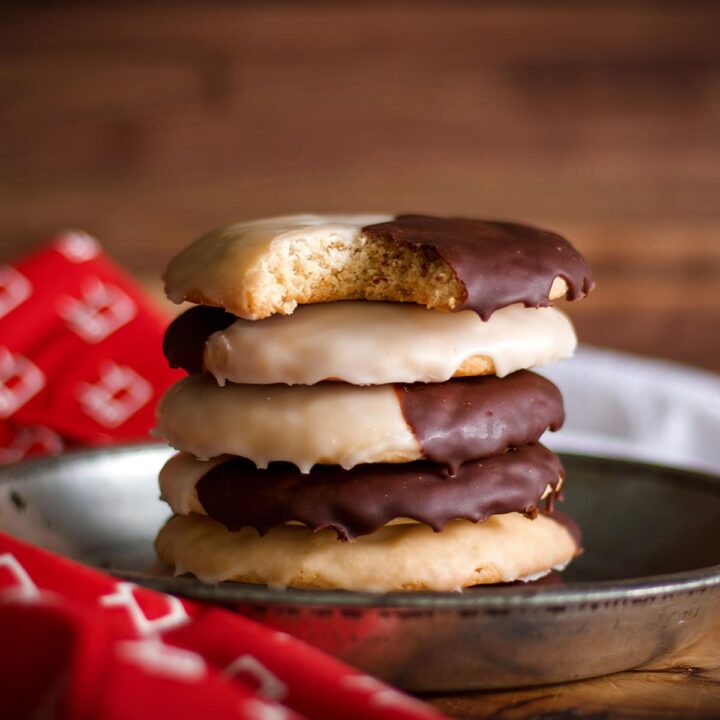

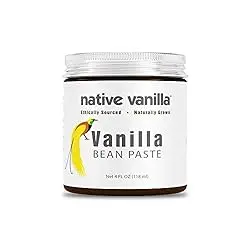
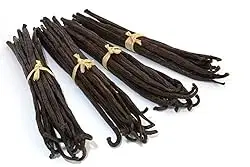

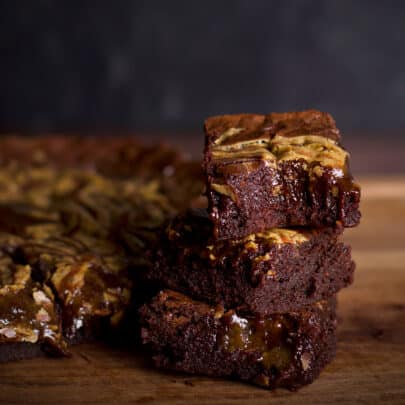


Tina says
My mother used to make a similar cookie but sometimes added nuts or chocolate chips. Can anything be added to these?
Rebecca Blackwell says
Hi Tina! I think these cookies would be delicious with some chopped nuts and chocolate chips. I'd suggest chopping the nuts into small-ish pieces and using mini-chocolate chips. Using small pieces for the add-ins will help preserve the creamy, chewy texture of the cookies. Stir the nuts and chocolate chips into the dough as the last step before refrigerating the dough for a few hours, then shape and bake as directed. I hope that helps! Please let me know if you have any other questions and I'd love to hear how these come out for you!
Elsa says
I was making a recipe that used 2 egg yolks and looked for a way to use the whites--These cookies were so easy to make & tasted delicious! My family loved the balance of vanilla, almond, and spices along with the browned butter. Thank you for the recipe, Rebecca!
Rebecca Blackwell says
I am so happy to hear that Elsa! Thank you so much for taking the time to leave a comment for me. I truly appreciate it!
Sarah says
Made these for Thanksgiving as a part of our dessert table and they disappeared immediately! I had to make another batch for myself and have been enjoying them with my afternoon tea each day - what a treat! Perfectly chewy and the toffee taste is divine. These are a new favorite!
Rebecca Blackwell says
I am so happy to hear that you like this recipe Sarah! Thank you so much for taking the time to leave a comment for me. I truly appreciate it!
Kimmy says
I tried this recipe yesterday and was pleasantly surprised by how delicious it is. My family also enjoys this cookie recipe, so they asked me if I could make them again this coming weekend. Thanks for sharing this❤️️
Rebecca Blackwell says
I am so happy to hear that you and your family enjoyed these cookies so much Kimmy. Thank you so much for taking the time to let me know. I truly appreciate it!
Maddie says
I used the Native Vanilla bean paste and made these cookies and they turned out perfect. I ate way too many of them warm from the oven before my family could get to them. lol This is a must-make again recipe, I loved the brown sugar flavor and the chewiness.
Rebecca Blackwell says
I am so happy to hear that you and your family liked this recipe so much Maddie! Thank you so much for taking the time to leave a comment for me. I truly appreciate it! Hopefully your family will get more of the next batch. 😂